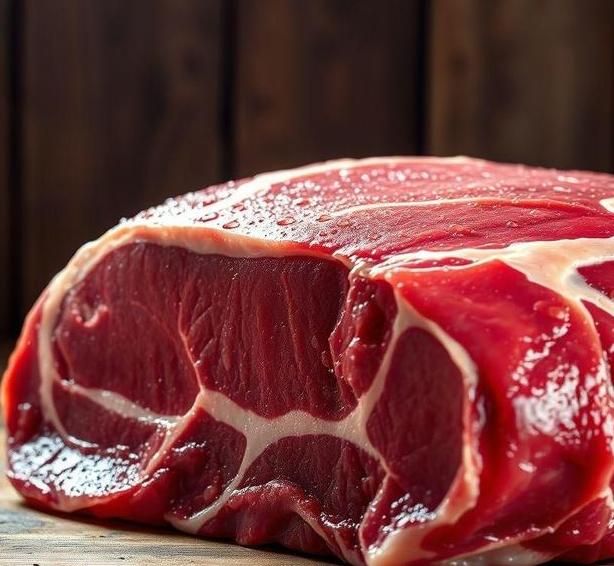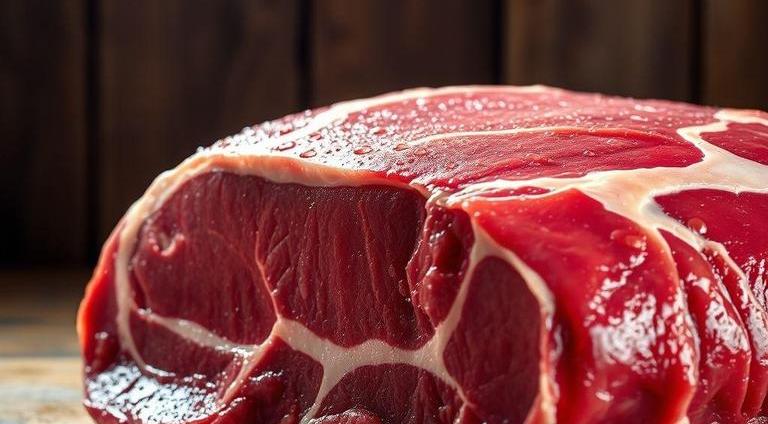Flash meat, also known as flash-frozen meat, has become a staple in the food industry due to its convenience and preservation qualities. Essentially, it’s meat that is frozen at extremely low temperatures immediately after being processed. This rapid freezing process locks in freshness, texture, and nutrients, making flash-frozen meat a popular choice among consumers who want to maintain the flavor and quality of meat over longer periods. But just because meat is frozen doesn’t mean it’s immune to spoilage.
In this guide, we’re diving deep into the topic of flash meat-how long it lasts, how to spot signs of spoilage, and, most importantly, how to properly store it so you get the best out of your frozen meat.
Can Flash Meat Go Bad?
Yes, flash meat can go bad, even though the freezing process helps preserve it for a long time. While freezing does slow down bacterial growth, it doesn’t completely stop it. Spoilage occurs slowly, often starting with a degradation in texture or taste, which can be hard to detect right away. Here’s a breakdown of why and how flash meat can go bad:
- Freezer Burn: One of the most common issues with frozen meat, freezer burn happens when air comes into contact with the meat, causing dehydration. This leaves the surface of the meat discolored, dry, and sometimes tough.
- Storage Duration: Even flash-frozen meat isn’t meant to stay in the freezer forever. Over time, the meat’s quality deteriorates, though it may still technically be safe to eat if stored properly.
- Improper Freezing: If meat wasn’t frozen immediately after being processed or if it was thawed and refrozen, bacteria can start to grow. This can cause the meat to spoil prematurely.
- Temperature Fluctuations: If your freezer is frequently opened or doesn’t maintain a consistent temperature, the meat can start to degrade faster.
Shelf Life For Flash Meat

The shelf life of flash meat depends on several factors, including the type of meat, how it’s packaged, and how it’s stored. That said, flash-frozen meat is known for lasting much longer than traditional freezing methods.
Here’s a breakdown of how long various types of flash-frozen meats typically last when stored correctly:
-
Beef
- Cuts like steaks or roasts: 12-18 months
- Ground beef: 3-4 months
-
Chicken
- Whole chicken or chicken parts: 12 months
- Ground chicken: 3-4 months
-
Pork
- Chops or roasts: 6-8 months
- Ground pork: 3-4 months
-
Fish And Seafood
- Fatty fish (like salmon or trout): 2-3 months
- Lean fish (like cod or haddock): 6 months
- Shellfish: 6 months
- Lamb: 6-12 months, depending on the cut.
These are general guidelines, and the meat can remain safe to eat beyond these periods, but the texture and flavor may deteriorate.
Common Signs Of Spoilage
While flash meat is often stored with an intent for long-term preservation, it doesn’t mean it won’t eventually show signs of going bad. Spoiled flash meat isn’t always easy to detect, especially when it’s still frozen. However, these are the common signs that indicate spoilage:
- Discoloration: If the meat appears gray, brown, or has dark patches, it could be a sign that it’s starting to spoil. Flash-frozen meat should retain a vibrant, fresh color.
- Freezer Burn: As mentioned, freezer burn results in white or grayish patches on the surface of the meat. Though it’s not harmful, it affects the taste and texture, leading to a less enjoyable eating experience.
- Off Odor: Once thawed, flash-frozen meat should smell like fresh meat. If there’s a sour, rancid, or off-putting odor, it’s likely spoiled.
- Texture Change: Spoiled meat might feel slimy, mushy, or have a gritty texture. This is especially common in poultry or fish.
- Ice Crystals: Excessive ice crystals on the packaging or meat can indicate the meat was thawed and refrozen, which can degrade the quality and lead to spoilage.
How To Store Flash Meat?

Storing flash meat correctly is crucial to maintain its freshness and avoid spoilage. Whether you’re keeping it for a few months or longer, here’s how you should store it:
Expert Tips
To help you get the most out of your flash meat, here are a few expert tips to follow:
- Use within the recommended timeframe: While flash meat can technically last longer, it’s best to eat it within the suggested time frames for optimal quality. It may still be safe to consume after this period, but the flavor and texture may suffer.
- Flash Freeze at Home: If you’ve bought meat in bulk, consider cutting it into portions and flash freezing it yourself. This way, you can freeze the pieces as fresh as possible.
- Thaw Properly: Thaw meat in the fridge, not on the countertop. This minimizes the risk of bacteria growth. Also, avoid thawing and refreezing multiple times.
- Keep it Clean: Make sure your freezer and the packaging you use are clean and dry. Even small amounts of moisture can lead to freezer burn or mold.
- Consider Meat Grade: Higher-grade cuts tend to hold up better in the freezer. For example, prime beef will usually freeze better than a cheaper cut like chuck or skirt steak.
FAQs
What Is Flash Freezing, And How Does It Affect Meat?
Flash freezing is a process where meat is rapidly frozen at extremely low temperatures to preserve its freshness. This technique helps maintain the meat’s quality by preventing the formation of large ice crystals that can damage the cells of the meat, thereby preserving texture, flavor, and nutritional value.
Can Flash-frozen Meat Go Bad Over Time?
Yes, while flash-frozen meat is preserved for longer periods than non-frozen meat, it can still go bad over time. The key factors include improper storage, temperature fluctuations, and the duration for which the meat is kept frozen. Over extended periods, the meat may suffer from freezer burn or degradation in flavor and texture.
How Long Can Flash-frozen Meat Last In The Freezer?
Flash-frozen meat can typically last anywhere from 6 months to 1 year in the freezer, depending on the type of meat and how well it is packaged. While it may still be safe to eat beyond this timeframe, the quality, texture, and taste may start to decline.
Does Flash Freezing Prevent Bacteria Growth In Meat?
Flash freezing slows down bacterial growth significantly by bringing the temperature of the meat to very low levels quickly. However, it doesn’t kill bacteria; it merely halts their activity. Once the meat is thawed, bacteria can begin to grow again, especially if the meat is kept at unsafe temperatures.
Can Flash-frozen Meat Still Develop Freezer Burn?
Yes, even flash-frozen meat can develop freezer burn, though the risk is lower compared to meat frozen slowly. Freezer burn occurs when meat is exposed to air within the freezer, leading to dehydration and changes in texture. Proper packaging and sealing are essential to reduce this risk.
What Signs Indicate That Flash-frozen Meat Has Gone Bad?
Signs that flash-frozen meat has gone bad include an off or sour smell when thawed, changes in texture such as being overly dry or mushy, and discolored or darkened areas. If freezer burn is present, you may notice grayish-brown patches. However, if the meat was properly stored, it might still be safe to consume but may have a diminished flavor.
How Can I Prevent Flash-frozen Meat From Going Bad?
To prevent flash-frozen meat from going bad, ensure it is stored at a constant temperature of 0°F (-18°C) or lower. Use airtight packaging or vacuum-sealing methods to avoid exposure to air. Also, minimize temperature fluctuations by keeping the freezer door closed and avoiding thawing and refreezing meat multiple times.
Is It Safe To Eat Flash-frozen Meat Past Its Expiration Date?
While flash-frozen meat may still be safe to eat past its expiration date, it may not retain the same quality. The meat could have lost some of its flavor and texture. Always check for any signs of spoilage, like unusual odors or discoloration, before consumption.
Can I Refreeze Flash-frozen Meat Once It Has Been Thawed?
It is generally not recommended to refreeze meat once it has been thawed due to potential bacterial growth during the thawing process. However, if the meat was thawed in the refrigerator and has not reached unsafe temperatures, it may be safe to refreeze, though the quality might be affected.
Does The Quality Of Flash-frozen Meat Degrade Faster If It Is Thawed And Refrozen Multiple Times?
Yes, thawing and refreezing flash-frozen meat multiple times accelerates the degradation of quality. Each thawing and refreezing cycle increases the chances of bacterial growth, freezer burn, and texture loss, resulting in less desirable taste and texture when cooked.